 W
WAngel Pavement is a novel by J. B. Priestley, published in 1930 after the enormous success of The Good Companions (1929).
 W
WThe Apes of God is a 1930 novel by the British artist and writer Wyndham Lewis. It is a satire of London's contemporary literary and artistic scene.
 W
WApril Fools is a 1930 comedy novel by the British writer Compton Mackenzie. It is the sequel to his 1919 work Poor Relations.
 W
WThe Autocracy of Mr. Parham is a novel by H. G. Wells. It was originally published in both Britain and America with illustrations by the British cartoonist Low.
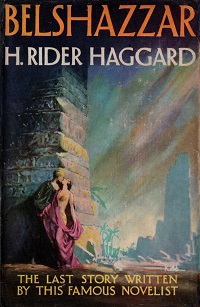 W
WBelshazzar is a historical novel by H Rider Haggard set in Ancient Babylon. It was written in 1924, and was just finished at the time of his death.
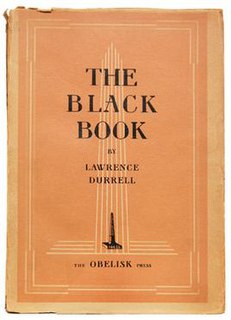 W
WThe Black Book is a novel by Lawrence Durrell, published in 1938 by the Obelisk Press.
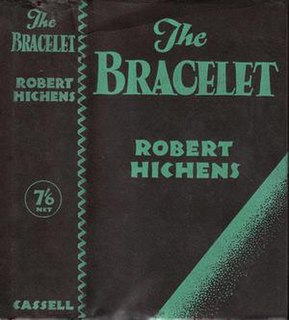 W
WThe Bracelet is a 1930 novel by the British writer Robert Hichens. A society scandal breaks over a bracelet given by a man to a woman, leading to a court case.
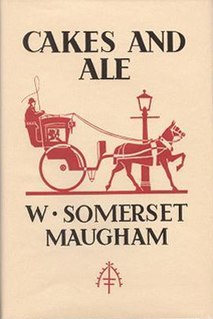 W
WCakes and Ale, or, The Skeleton in the Cupboard (1930) is a novel by the British author W. Somerset Maugham. Maugham exposes the misguided social snobbery levelled at the character Rosie Driffield, whose frankness, honesty, and sexual freedom make her a target of conservative propriety. Her character is treated favourably by the book's narrator, Ashenden, who understands that she was a muse to the many artists who surrounded her, and who himself enjoyed her sexual favours.
 W
WThe Calendar is a 1930 British thriller novel by Edgar Wallace. A racehorse owner agrees to throw a race and has to deal with the consequences of his decision. It is a novelisation of the 1929 play of the same title by Wallace.
 W
WCastle Gay is a 1930 novel by the Scottish author John Buchan. It is the second of his three Dickson McCunn novels and is set in the Scottish district of Carrick, Galloway some six years after the events described in Huntingtower.
 W
WChildren of This Earth is a 1930 novel by Scottish writer Bruce Marshall.
 W
WThe Documents in the Case is a 1930 novel by Dorothy L. Sayers and Robert Eustace. It is the only one of Sayers's twelve major crime novels not to feature Lord Peter Wimsey, her most famous detective character.
 W
WThe Edwardians (1930) is one of Vita Sackville-West's later novels and a clear critique of the Edwardian aristocratic society as well as a reflection of her own childhood experiences. It belongs to the genre of the Bildungsroman and describes the development of the main character Sebastian within his social world, in this case the aristocracy of the early 20th century. “I ... try to remember the smell of the bus that used to meet one at the station in 1908. The rumble of its rubberless tyres. The impression of waste and extravagance which assailed one the moment one entered the doors of the house. The crowds of servants; people’s names in little slits on their bedroom doors; sleepy maids waiting about after dinner in the passages. I find that these things are a great deal more vivid to me than many things which have occurred since, but will they convey anything whatever to anyone else? Still I peg on, and hope one day to see it all under the imprint of the Hogarth Press, in stacks in the bookshops.”
 W
WFire Below is a 1930 adventure novel by the English author Dornford Yates, the fourth in his Chandos thriller series and a sequel to Blood Royal. The book was published in the US under the title By Royal Command.
 W
WGiant's Bread is a novel by British writer Agatha Christie, first published in the UK by Collins in April 1930 and in the US by Doubleday later in the same year. The UK edition retailed for seven shillings and sixpence (7/6) and the US edition at $1.00. It is the first of six novels Christie published under the nom-de-plume "Mary Westmacott".
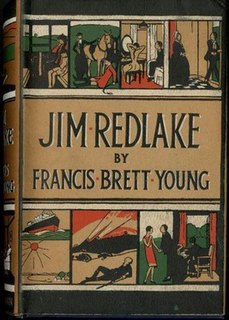 W
WJim Redlake is a 1930 novel by the British writer Francis Brett Young. It portrays the life of the title character from childhood. Like most of his works, it was influenced by his own life experiences. Scenes set during the East African campaign had been censored from his earlier memoir of the campaign Marching on Tanga. Young later declared it his favourite of his own novels.
 W
WKnight Templar is the title of a mystery novel by Leslie Charteris first published in October 1930. This was the fourth book—and third full novel—featuring Charteris's Robin Hood-inspired anti-hero, Simon Templar, alias "The Saint". The title of the book is a pun on the religious organization Knights Templar. Later editions were titled The Avenging Saint and the book is also well known by this title, which was first used in a 1931 edition.
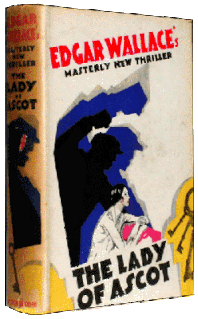 W
WThe Lady of Ascot is a 1930 crime novel by the British writer Edgar Wallace. It is a loose novelisation of Wallace's 1921 play M'Lady about a woman attempting to raise her daughter in high society whose plans are threatened by the return of her husband who has been serving a sentence at Broadmoor for the murder of a police officer.
 W
WLast and First Men: A Story of the Near and Far Future is a "future history" science fiction novel written in 1930 by the British author Olaf Stapledon. A work of unprecedented scale in the genre, it describes the history of humanity from the present onwards across two billion years and eighteen distinct human species, of which our own is the first. The book employs a narrative conceit that, under subtle inspiration, the novelist has unknowingly been dictated a channelled text from the last human species.
 W
WThe Last Hero is the title of a thriller novel by Leslie Charteris that was first published in the United Kingdom in May 1930 by Hodder and Stoughton and in the United States in November 1930 by The Crime Club. The story initially appeared in The Thriller, a British magazine, in 1929. Because of this somewhat convoluted publishing history, The Last Hero is occasionally cited as the second volume of adventures featuring the crime-busting antihero Simon Templar, alias The Saint, predating Enter the Saint. In fact, according to Charteris himself, it was the third book of the series. This is supported by references to the events of Enter the Saint within the novel.
 W
WLook to the Lady is a crime novel by Margery Allingham, first published in January 1931, in the United Kingdom by Jarrolds Publishing, London, and in the United States by Doubleday, Doran, New York, as The Gyrth Chalice Mystery. It is the third novel featuring the mysterious Albert Campion, accompanied by his butler/valet/bodyguard Magersfontein Lugg.
 W
WMemoirs of an Infantry Officer is a novel by Siegfried Sassoon, first published in 1930. It is a fictionalised account of Sassoon's own life during and immediately after World War I. Soon after its release, it was heralded as a classic and was even more successful than its predecessor, Memoirs of a Fox-Hunting Man.
 W
WThe Murder at the Vicarage is a work of detective fiction by British writer Agatha Christie, first published in the UK by the Collins Crime Club in October 1930 and in the US by Dodd, Mead and Company later in the same year. The UK edition retailed at seven shillings and sixpence (7/6) and the US edition at $2.00.
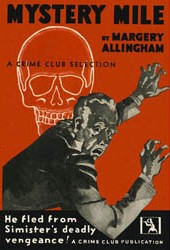 W
WMystery Mile is a crime novel by Margery Allingham, first published in 1930, in the United Kingdom by Jarrolds Publishing, London, and in the United States by Doubleday, Doran, New York. Following his first, supporting appearance in The Crime at Black Dudley (1929), it is the first of many novels starring the mysterious Albert Campion, and introduces his butler/valet/bodyguard Magersfontein Lugg.
 W
WThe Name of Action is Graham Greene's second novel, published in 1930. The book was badly received by critics, and suffered poor sales. Greene later repudiated the book and it has remained out of print ever since.
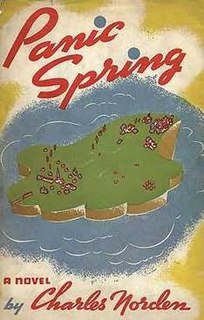 W
WPanic Spring is a novel by Lawrence Durrell, published in 1937 by Faber and Faber in Britain and Covici-Friede in the United States under the pseudonym Charles Norden. It is set on a fictional Greek Island, Mavrodaphne, in the Ionian Sea somewhere between Patras, Kephalonia, and Ithaca. The island, however, resembles Corfu strongly, and in at least one inscribed copy of the novel, Durrell includes a map of Corfu identified as Mavrodaphne.
 W
WPowder and Patch is a novel written by Georgette Heyer. It was originally titled The Transformation of Philip Jettan when published by Mills and Boon in 1923. In 1930, the book was republished by William Heinemann minus the original last chapter as Powder and Patch.
 W
WSwallows and Amazons is the first book in the Swallows and Amazons series by the English author Arthur Ransome; it was first published on 21 July 1930, with the action taking place in the summer of 1929 in the Lake District. The book introduces the main protagonists John, Susan, Titty and Roger Walker (Swallows), their mother Mary, their baby sister, as well as Nancy and Peggy Blackett (Amazons), their uncle Jim, commonly referred to as Captain Flint and their widowed mother Molly Blackett.
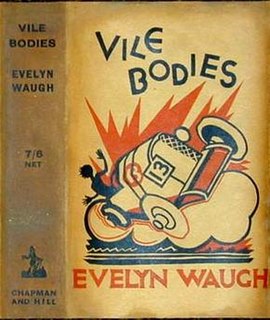 W
WVile Bodies is the second novel by Evelyn Waugh, published in 1930. It satirises the bright young things, the rich young people partying in London after World War I, and the press which fed on their doings. The original title of Bright Young Things, which Waugh changed because he thought the phrase had become too clichéd, was used in Stephen Fry's 2003 film adaptation. The eventual title appears in a comment made by the novel's narrator in reference to the characters' party-driven lifestyle: "All that succession and repetition of massed humanity... Those vile bodies...". The book was dedicated to B. G. and D. G., Waugh's friends Bryan Guinness and his wife Diana.